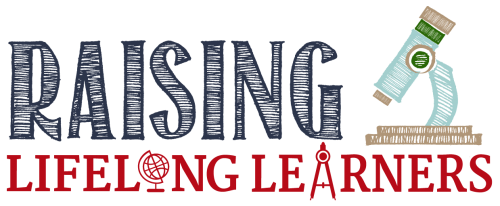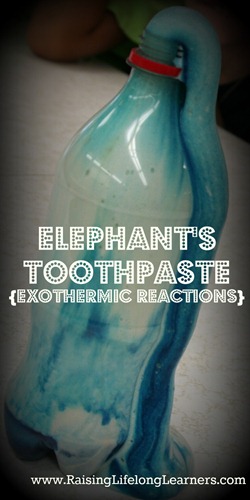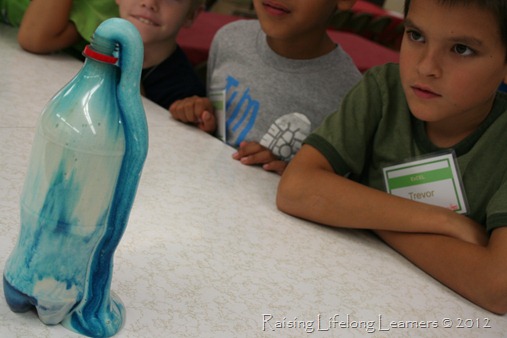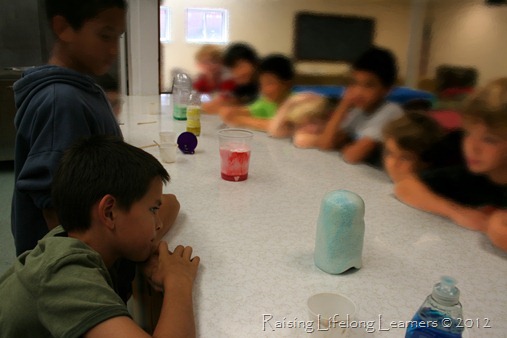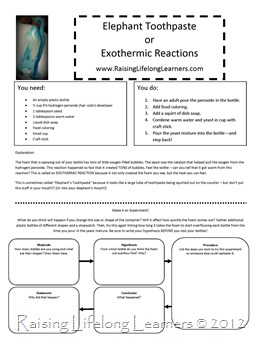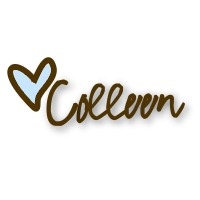Elephant’s Toothpaste {Exothermic Reactions}
This fall, my kids and I are participating in a newly formed co-op and I’m teaching a hands-on “explosive” science class {shocking, right?}. It’s fun because, since moving at the end of the summer, I’ve kept all but the essential school stuff packed away – teeny house and all – and this is forcing me to pull some of it out and try new things with my kids {so I can make sure that they don’t flop with the others}.
Unfortunately, I chose to offer this {and another} labor-intensive class before I knew I was pregnant, so I haven’t given myself enough time to test things out as I’d wanted. I’m just too.stinking.tired. Thankfully, our “elephant toothpaste” experiment worked out well.
I want to take a moment here, though, to talk about the difference between experiment and demonstration or activity. As a science writer for kids, parents, and teachers, I am careful to use the words correctly. Cool and explosive scientific reactions can be seen through demonstrations like Mentos geysers and baking soda volcanoes, but they’re not experiments. They are activities – kids do them knowing or having an idea of what will happen.
To be an experiment, a variable needs tested. Kids need to make hypotheses and observe results, then draw conclusions about what happened and why. A Mentos geyser demonstration can become an experiment by changing the type of soda used or the temperature of that soda, and posing the question, “does the type of soda used affect the height of the geyser?” Not only do simple changes like this turn demonstrations into experiments, but they get kids thinking about how variables effect change in results.
So, after trying to figure out what to do to keep every one of my squirrely boys {did I mention that I have 11 boys between the ages of six and ten?} occupied and engaged, I settled on a couple of messy demonstrations-turned-experiments.
One was to create elephant toothpaste.
Have you seen this done on other blogs? or websites? It’s really fun, messy, and looks cool…perfect for little boys. Want to try it with your own kids?
You’ll need:
- An empty plastic bottle
- 1/2 cup of 6 % hydrogen peroxide {this is hair-color-developer & available at beauty supply stores for very inexpensive}
- 1 tablespoon yeast
- 3 tablespoons warm water
- Liquid dish soap
- Food coloring
- Small cup
- Craft stick
Got all of your materials? Then you’re ready to go:
- Have an adult {wearing safety goggles} pour the peroxide in the bottle
- Add a couple squirts of food coloring
- Pour in a squirt of dish soap
- Combine the water and yeast in the small cup and mix with the craft stick until the yeast is activated
- Dump the yeast mixture into the bottle
What happened? In this, the demonstration, you should have seen the yeast mixture react with the peroxide mixture to cause an exothermic reaction. Heat and foam were created that oozed out of the bottle like toothpaste.
Now, make it an experiment. Click on the thumbnail of the experiment sheet, print it, and test how long it takes the foam to rise out of different sized and shaped bottles. Does the shape matter? The size? Why or why not? Have your kids use their observational skills to figure it out!
If you try this, stop back and let me know how it went. The boys in my class loved it – though you only see Trevor’s face in these pictures. I forgot to ask the boys’ parents who would be okay with me sharing their kids’ pictures on the blog, so I chose to blur everyone other than Trevor out.
Another class is coming up – hopefully I’ll have lots of fun and explosive science to share with you again soon! Enjoy the start to your week.
